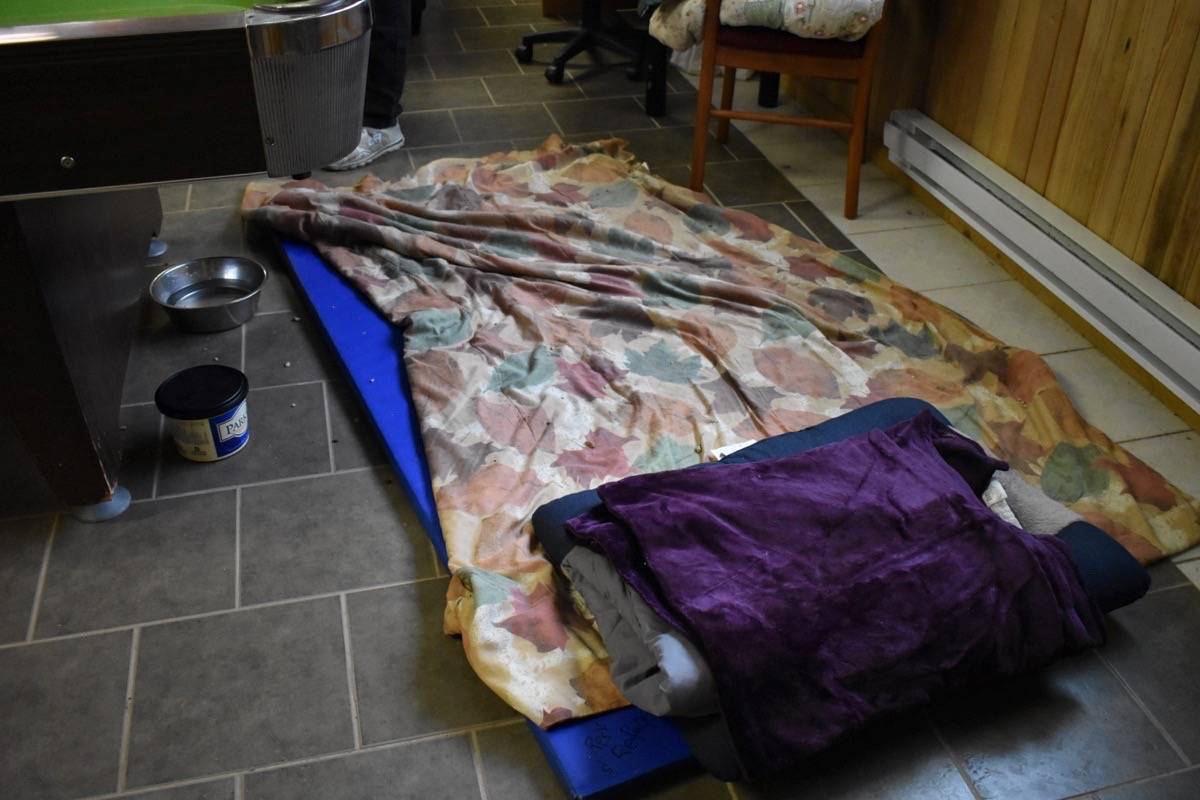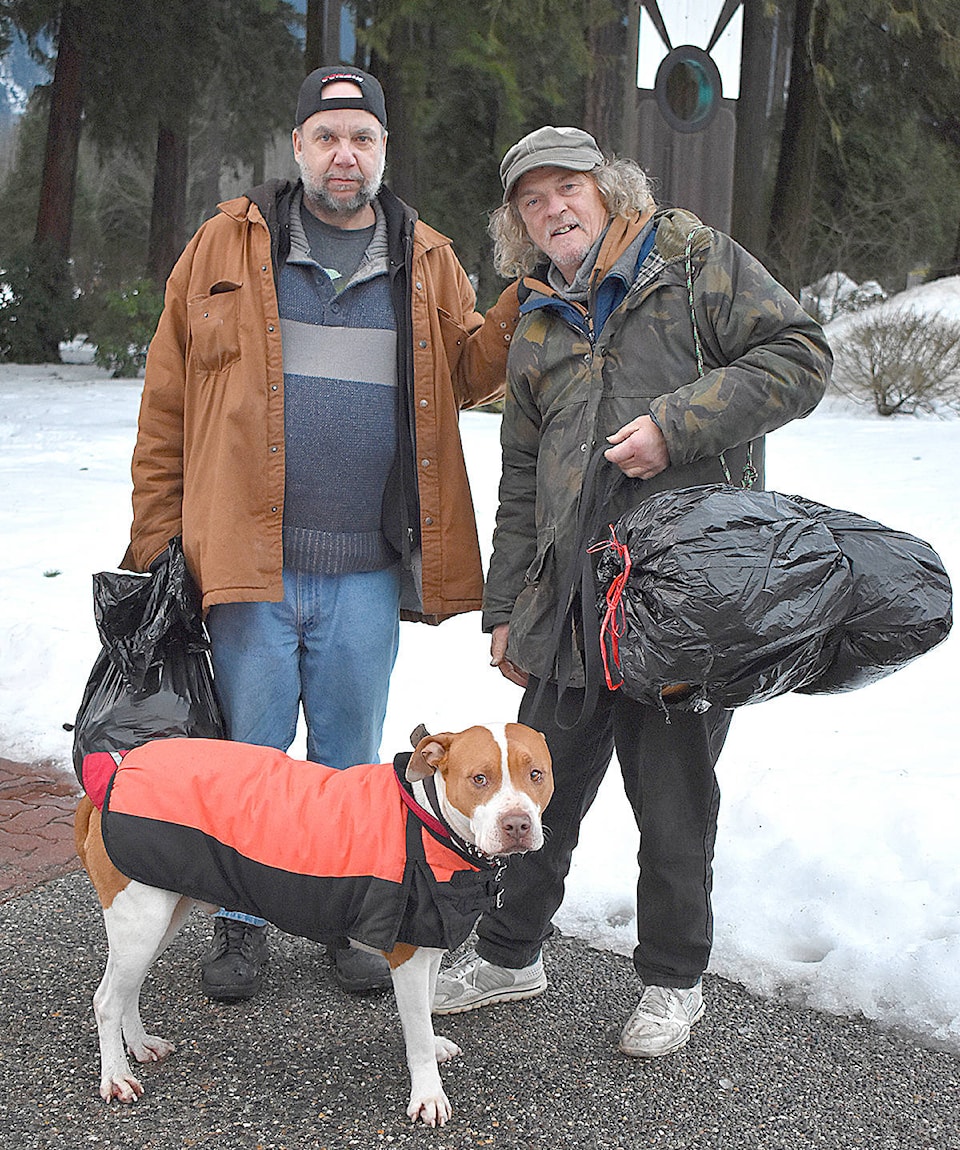The extreme weather program in Hope saw a busy first month, but two people who use the service say there is a need for more warm spaces to go during the day.
During the month of December, 167 people accessed the weather shelter. This is one person per day more on average than 2016, when 117 people sought shelter in the same period.
The space consists of mats laid down in the Thunderbird Motel’s 1,000 square foot common area. It officially houses five people but often accommodates many more. Last winter it housed 17 people in one night, this December the highest number of people in one night was 11.
“We don’t want to turn people away because we don’t want anything severe to happen to them,” said Gerry Dyble, executive director of the Hope and Area Transition society who runs the program.
Two men who sleep in the weather shelter told The Standard they spend up to 12 hours walking around the town during the day and need a place to keep warm when it isn’t open.
“Our biggest issue is, to tell you the truth, the time we’re not allowed in there,” Dave Phelps said, who is on welfare and said he cannot afford to rent a place of his own. “No matter what the weather is, doesn’t matter if its snowing, raining, freezing rain, doesn’t matter what the weather is. You feel sick, you feel frozen, frostbite, hypothermia.”
Andrew Michael Wallace, a friend of Phelps’ who is on disability, is having trouble finding a place to stay that will take him and his dog Buster. He said headaches, colds and burning extremities are some of the health effects he has from being outside in the winter.
The two estimate they are outside around 50 hours each week and the effects of not having a place to go during the day is more than physical Phelps said. “It seems like nobody cares, we’re nothing to them. Because if we were, something would be done about it.”
Phelps wants to see one of the empty buildings in Hope turned into a place to be during the day, when the weather turns cold. During the summer Phelps and Wallace said they prefer to be outdoors.
The extreme weather program is not open between the hours of 3 p.m. to 8 p.m. Monday to Thursday, 12 noon to 8 p.m. Friday, and 8 a.m. to 8 p.m. on weekends, said Dyble.
During times of severe cold the common area has been opened on weekends. In order to open the space for more hours HATS would need to hire an extra staff member, but the Lower Mainland’s homeless and opioid crises has been pulling provincial dollars away from the needs in Hope.
“When people are talking about evening hours and weekend hours, it is a funding issue as well as it’s a liability issue and a WCB issue, because then I need to have two staff on who are working,” Dyble said. “It’s not for a lack of advocating and talking to MLAs and presenting data to the ministry and saying these are our needs.”
HATS has previously run a drop-in centre, The H.O.P.E. (Helping Others Pursue Excellence) project, until grant funding dried up. Dyble said it was a Monday to Friday operation primarily for people struggle with mental health and wouldn’t have fit the needs Phelps and Wallace identified.
“For the most part they would have a home, they would have support systems, but this is just a place for them to go and be more socially included. And that’s what the hope project really was,” she said.
Phelps said security is also an issue at the shelter, he said he has been threatened more than once drug use inside the shelter.
Housing everyone can be a challenge as the individuals looking for shelter often have complex needs.
“These are the individuals that, typically, don’t fit into our emergency shelter if our emergency shelter is full. We have four beds. Or we can’t house them in the emergency shelter due to their challenging needs,” Dyble said.
“So they are probably the most challenging individuals in the community to house.”
The shelter is able to call on the RCMP to assist if a situation escalates, but Dyble said nothing extreme has happened.
The shelter worker usually has relationships with those coming in and they are often the same people night after night, Dyble said. A conversation will happen between the shelter worker and the person looking to come in, if they are intoxicated or having other difficulties.
The Thunderbird is located out of town at 63030 Flood-Hope Rd., so a van picks people up from downtown Hope and drives them to the Thunderbird. The van leaves 7:45 p.m. from outside Peter’s Foods, anyone who misses the bus can call the extreme weather line 604-869-1844.
With snow on the ground and temperatures below zero, Dyble said it will likely run until the end of March.
The program is in need of food donations as food is served in the shelter; a dinner in the evening and something smaller in the morning. “Cash is always the best, then we can buy the supplies that they need,” Dyble added.
The amount of homeless people in the Fraser Valley has reached its highest levels ever, a 2017 Fraser Valley Regional District survey found, with 36 people surveyed in Hope and six in Boston Bar.
Hope also had the highest proportion of homeless people identifying as Aboriginal.
The survey found emergency shelter beds in Hope were lower than the number of people homeless.

